Shouldn’t life be like an ensemble where multitudes of sensibilities from the past, together with newly created and improvised by your ingenuity, take you to living in the moment? We live in a journey between past and future and slowly find our creative space to live in the moment.
Shouldn’t life be like an ensemble where multitudes of sensibilities from the past, together with newly created and improvised by your ingenuity, take you to living in the moment?
We live in a journey between past and future and slowly find our creative space to live in the moment. Many sensibilities are ingrained in our culture to make life meaningful and beautiful with reverence for nature. In the current violent flux of forces unleashed by our industrial society needs, are we still able to take a moment to look into the sensibilities we are endowed with and improvise them for better life? I find Japanese retain many of their sensibilities to make life beautiful. I would like to touch upon some of them specifically which help them live sustainable life in beauty and harmony, all with realistic understanding of complexities of life.
“Mottainai”, repeated my Japanese friends consistently whenever they saw me leave behind food at lunch, in my earlier days in Japan. Mottainai implied that you are wasting food which should have been put to other use. Mottai implies making the best use. I was barely getting used to Japanese food, and at lunch time Cafeteria served only set menu lunch which always came with raw fresh vegetable salads. Coming from India where we ate only cooked vegetables, I couldn’t bring myself to eat raw vegetables. In a while I recollected…when we were children my cousin Zakir a budding Gandhian eating all food without wasting even a grain of rice, and my mother always reprimanding us not to waste food as many in the world are starving, and Mottainai made sense to me.
I started looking at Japanese sensibilities around food. Japanese invariably will be saying ‘Itadakimasu’ before start eating food and ‘Gochisosamadeshita’ after food. ‘Itadakimasu’ is showing
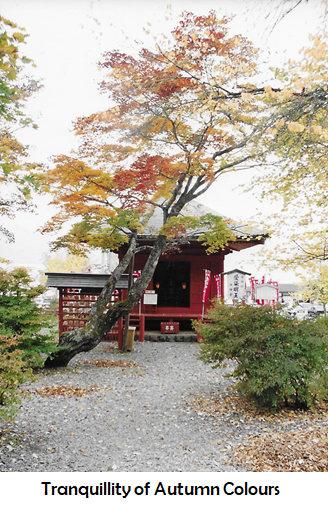
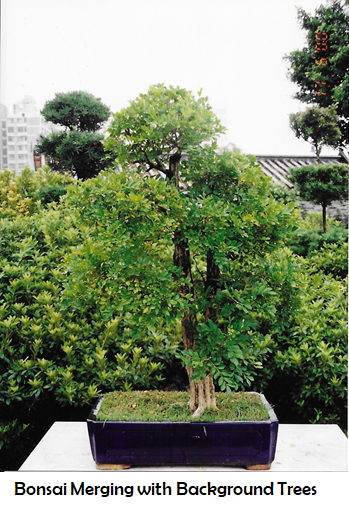
gratitude to nature and all the hands that helped to put that food on the table. ‘Gochisosamadeshita’ is politely thanking the people who earnestly worked hard, made, and served the delicious food.
In Mottainai, Itadakimasu, and Gochisosamadeshita lies the Japanese sensibilities of not wasting anything, showing reverence for nature and respect for all people who cared and made the food. I delved deeper to find the origin of these sensibilities, and soon came across Japanese traditional belief system and way of life ‘Shintoism’. The followers of Shintoism believe that spiritual powers exist in the natural world. They believe that spirits called "kami" live in natural places such as in animals, plants, stones, mountains, rivers, people and even the dead. Hence Shintoism ingrained in its followers, reverence for nature and spirit of harmony.
Have a look at what Tagore said about Japan.
“What has impressed me most in this country is the conviction that you have realized nature's secrets, not by methods of analytical knowledge, but by sympathy. You have known her language of lines, and music of colours, the symmetry in her irregularities, and the cadence in her freedom of movements; you have seen how she leads her immense crowds of things yet avoids all frictions; how the very conflicts in her creations break out in dance and music; how her exuberance has the aspect of the fulness of self-abandonment, and not a mere dissipation of display. You have discovered that nature reserves her power in forms of beauty; and it is this beauty which, like a mother, nourishes all the giant forces at her breast, keeping them in active vigour, yet in repose. …Dominating nature from outside is a much simpler thing than making her your own in love's delight, which is a work of true genius. Your race has shown that genius, not by acquirements, but by creations; not by display of things, but by manifestation of its own inner being. This creative power there is in all nations, and it is ever active in getting hold of men's natures and giving them a form according to its ideals. …But here, in Japan, it seems to have achieved its success, and deeply sunk into the minds of all men, and permeated their muscles and nerves. Your instincts have become true, your senses keen, and your hands have acquired natural skill. …The genius of Japan has given you the vision of beauty in nature and the power of realizing it in your life.”
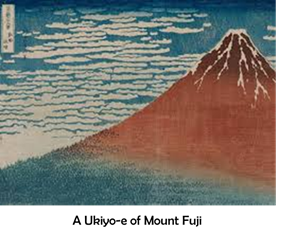
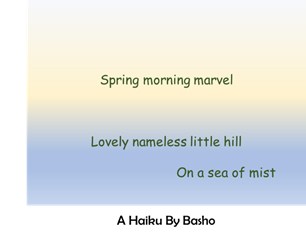
Japanese thus breathed the beauty of nature in their day to day life. The Japanese sense of aesthetics embedded in it the simplicity and serenity of nature while understanding its profundity and beauty. Japanese enjoyed nature through celebrating Sakura the unimaginably beautiful cherry blossom season and Koyo the mesmerizing autumn colours, and brought these elements in to their designs. They enjoyed Onsen the Japanese hot springs in rustic settings, Fujisan the majestic Mount Fuji in its millions of shades and enigma, created ikebana the subtle art of flower arrangement, bonsai miniaturization of trees to beautify gardens and interiors. Japanese Haiku a simple poetry form and Ukiyo-e a painting form where mostly the simple beauty of nature is depicted, ran in the minds of its people.
Japanese while enjoying the apparent beauty of nature, encompassed in their sensibilities, the complexities, mysteriousness, the changing, and the unknowns of nature. Let’s look into a few.
Mono no aware, a Japanese expression for the impermanence of things, and transience of beauty, expressed in a detached sadness with the awareness that life is a flow.
Yuugen, a sensibility of the mysterious profundity in nature, to not alone enjoy the visible superficial beauty of an object, but to enhance the beauty by imagination and subtility.
Shibui, a word expressing aesthetic of simple, subtle, and unobtrusive beauty, which keeps growing over time.
Wabi-Sabi, the aesthetic defined as the beauty of things imperfect, impermanent, and incomplete. It encompasses the beauty of rustic, aging, and selflessness.
Ikigai, a simple way of life with a purpose of life upholding reverence for nature and enjoying the natural richness of social life without any exploitation.
Finally, Zen which everyone is more or less familiar with, a path to enlightenment through intuitive approach, creation of beauty from within, finding originality in a state of egoless free mind. Zen practice in essence makes people meditate on the object of attention and selflessly indulge in a creative process.
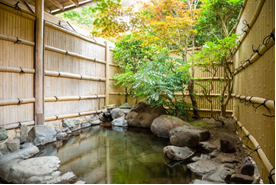
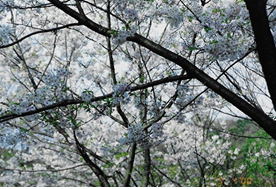
Thus, Japanese mind embracing nature in its depth and breadth kept alive reverence for nature and preserved it in essence and form. Modernization swept aside people to some extent making them lose essence, and transform to playing the cog in the machinery of wealth creation devoid of sensitivity to nature and its beauty. But some artists, philosophers, and thinkers managed to keep the forms alive in day-to-day life, which has made Japan think, go back and create back the virtuous cycles for an eco-friendly country.
Eco-friendly country is what Japanese are now coming back to. Japanese are now creating the virtuous cycles for building lasting eco-friendly country by invoking consciousness, building sensitivity and habits through education, creating technologies for renewable energy, energy conservation, waste management & recycling, lifestyle changes to green consumption, producing eco-friendly goods and services, and building eco-friendly cities. Japanese govts have taken upon them the task of remodelling Japan for eco-friendly country and people-oriented development through Society 5.0. They are consistently and persistently developing eco-friendly business models looking at resource productivity, natural energy utilization, eco-tourism and nature friendly world. Lining cities and towns with Sakura and autumn colour creating trees, creating habits of wellness through hiking and trekking where people walk into pristine nature and feel its beauty and love, bring to the map all natural beauty places for eco-tourism, have been initiated for re-instigating and restoring original Japanese aesthetics, and preserving nature.
I believe that Japanese sensibilities of nature love, appreciation of beauty, and spirit of harmony will lead to sustainability of nature. It is time the world too, look into and comprehend, and invoke our own cultural values pertaining to nature love and beauty seeking, and like Japanese create lifestyles, use technologies, products and services for sustainability.

